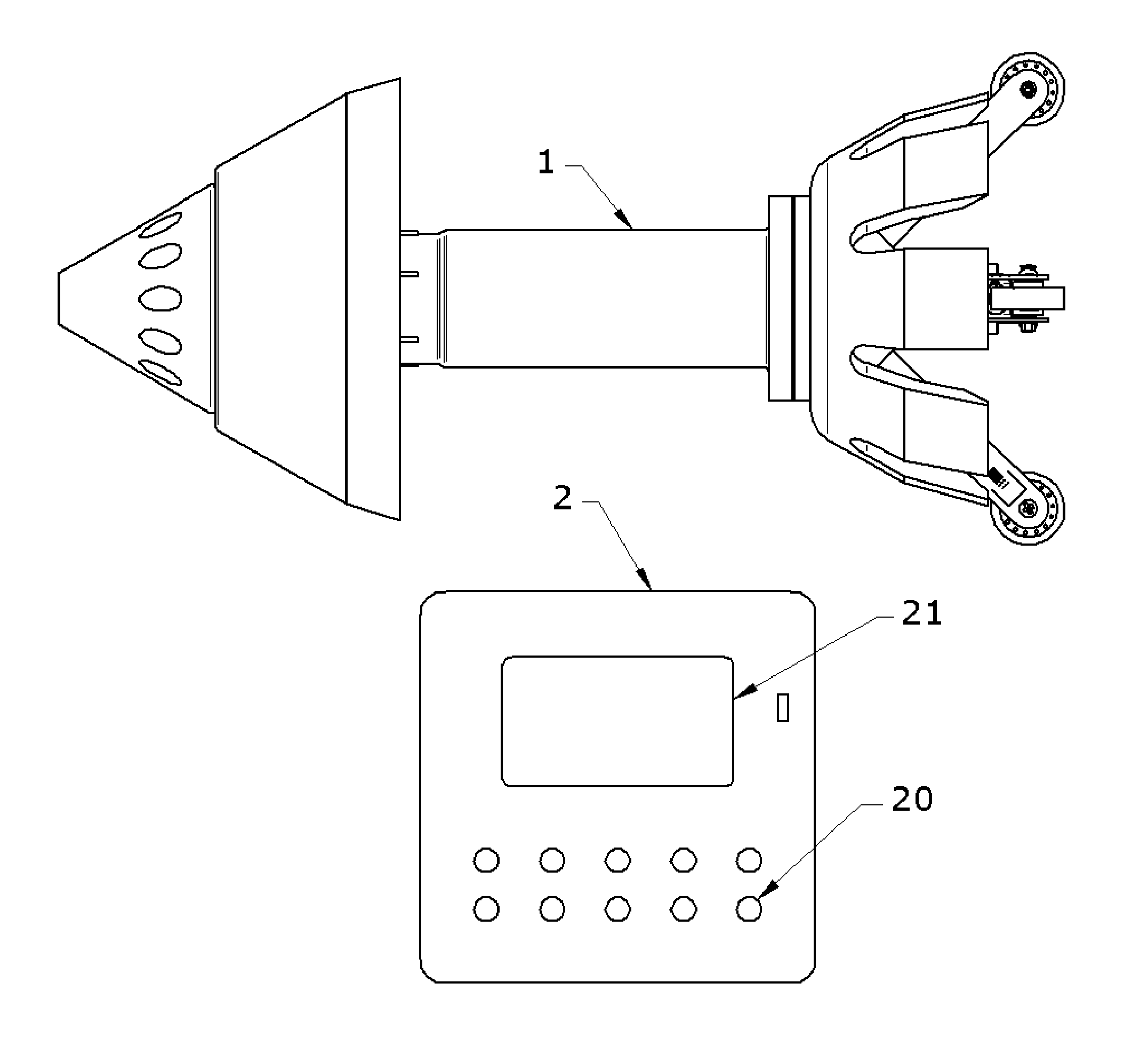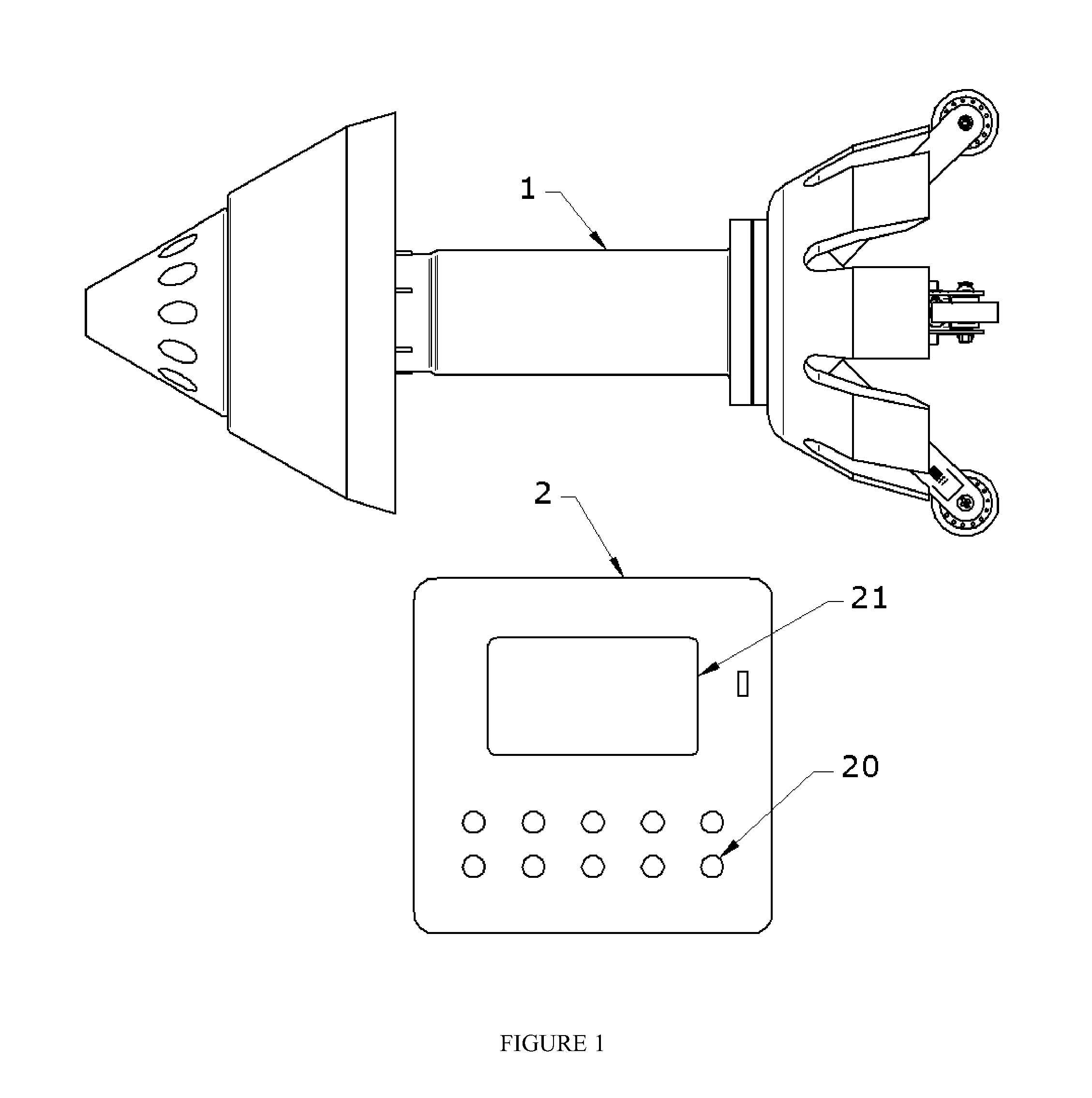Pipeline in-line inspection system
a pipeline inspection and pipeline technology, applied in the direction of mechanical measurement arrangements, mechanical roughness/irregularity measurements, instruments, etc., can solve the problems of substantial compromise of pipeline operator's other objectives, inconvenient inspection of pipelines, unsafe pipelines, etc., to reduce overall cost, simplify the analysis of inspection information, and simplify the inspection of pipelines
- Summary
- Abstract
- Description
- Claims
- Application Information
AI Technical Summary
Benefits of technology
Problems solved by technology
Method used
Image
Examples
Embodiment Construction
[0017]Referring now to the drawings, in FIG. 1 there is shown an illustrative embodiment of an in-line inspection device 1, and a user interface module 2. User inputs and commands are provided through a plurality of buttons 20 (or other type of control or switch) on the user interface module 2. Inspection results and other system notifications are viewed on the display 21 of the user interface module 2.
[0018]In FIG. 2 there is shown a front view of an in-line inspection device 1 of the illustrative system embodiment.
[0019]In FIG. 3 there is shown a section view of the in-line inspection device 1 having a sealing member 3 (variously referred to herein as a sealing cup, a drive cup, a sealing disk, or a drive disk) attached to the forward mounting flange of the main body 4 by fasteners 5. The sealing cup, drive cup or disk 3 is approximately 15% larger in diameter than the pipeline inside diameter and provides a seal to allow propulsion of the in-line inspection device through the pip...
PUM
 Login to View More
Login to View More Abstract
Description
Claims
Application Information
 Login to View More
Login to View More - R&D
- Intellectual Property
- Life Sciences
- Materials
- Tech Scout
- Unparalleled Data Quality
- Higher Quality Content
- 60% Fewer Hallucinations
Browse by: Latest US Patents, China's latest patents, Technical Efficacy Thesaurus, Application Domain, Technology Topic, Popular Technical Reports.
© 2025 PatSnap. All rights reserved.Legal|Privacy policy|Modern Slavery Act Transparency Statement|Sitemap|About US| Contact US: help@patsnap.com



